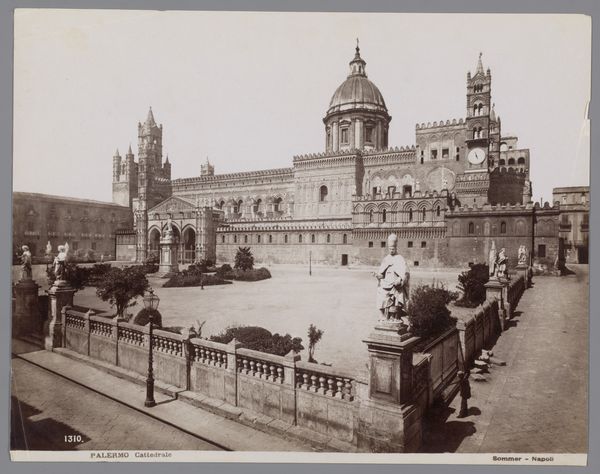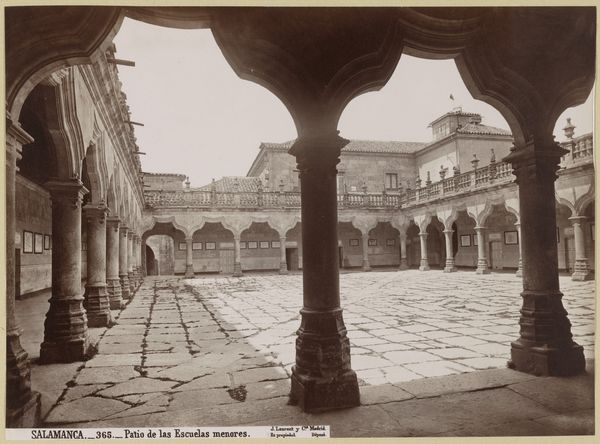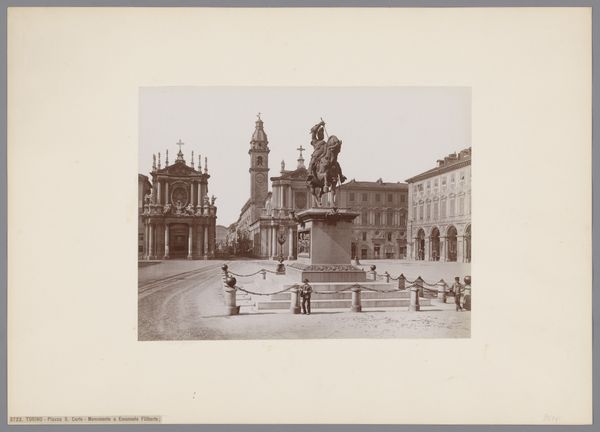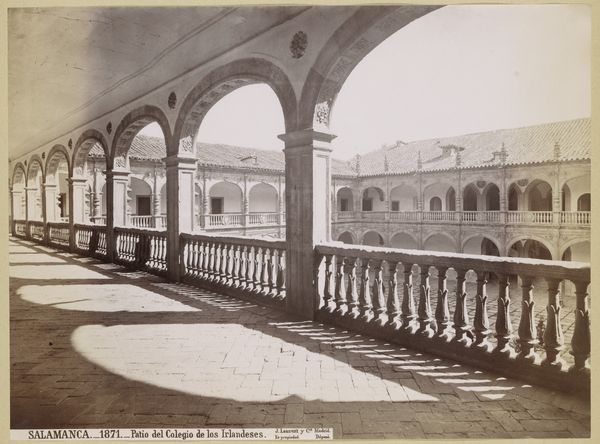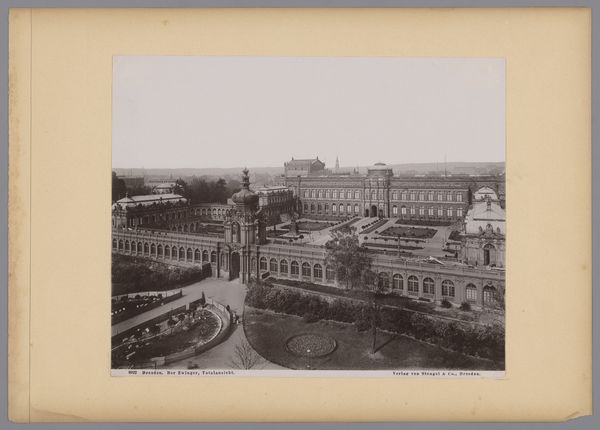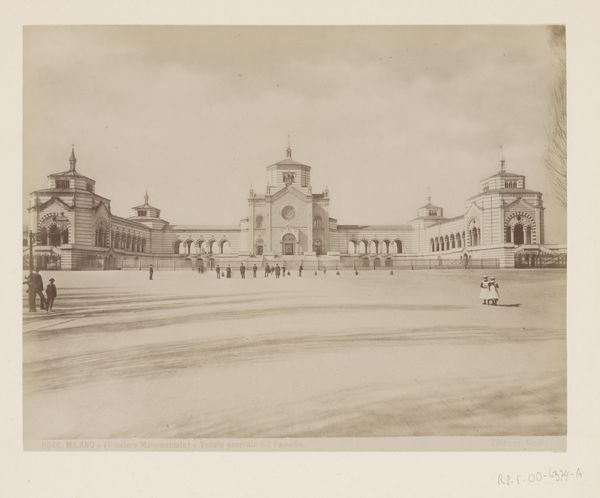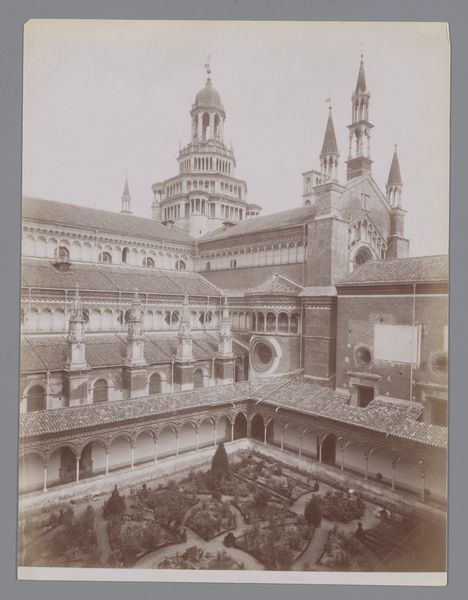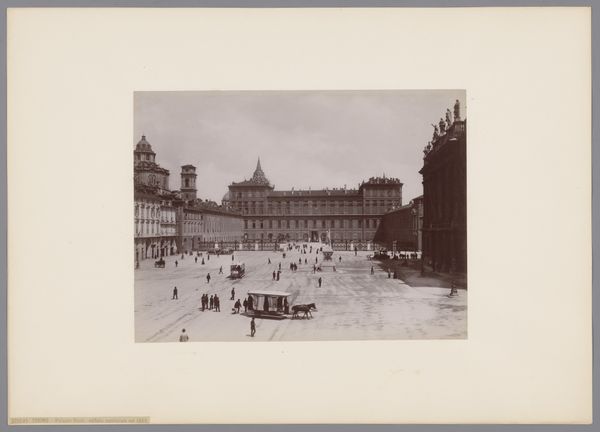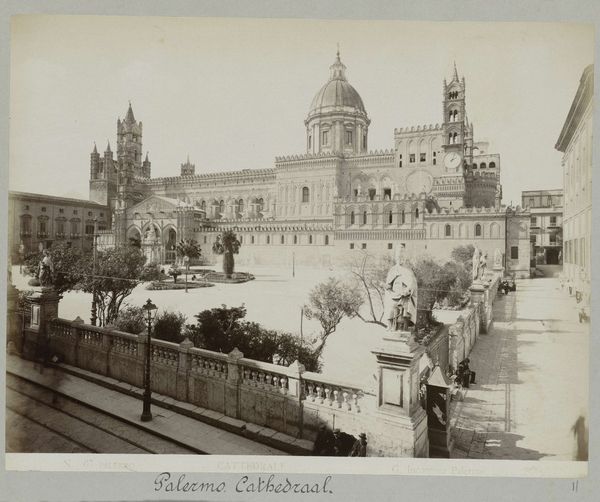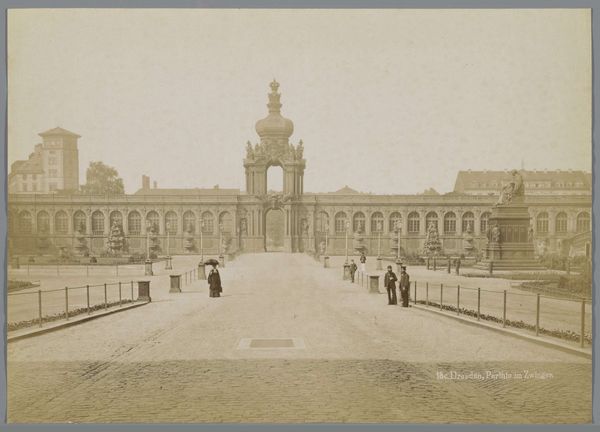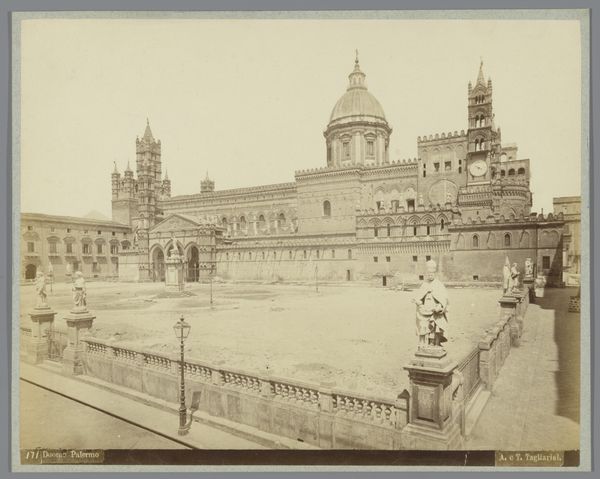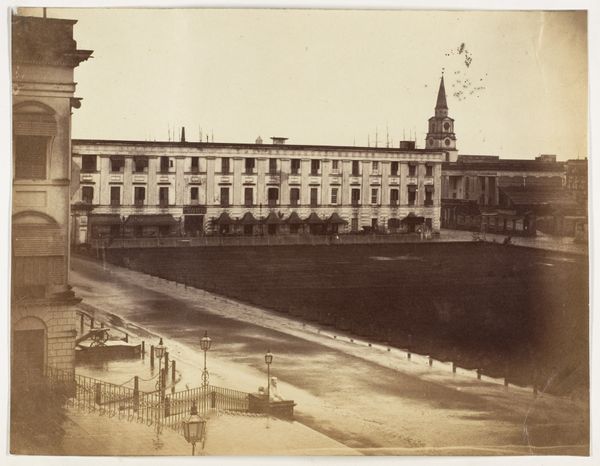
photography, gelatin-silver-print, architecture
#
byzantine-art
#
landscape
#
street-photography
#
photography
#
gelatin-silver-print
#
architecture
#
monochrome
Dimensions: height 303 mm, width 405 mm
Copyright: Rijks Museum: Open Domain
Giacomo Brogi captured this sepia photograph of monks in the Pavia cloister in Italy during the 19th century. The cloister, with its repetitive arches, embodies a powerful symbol of containment, a motif that echoes through art history, representing both spiritual retreat and the confines of the human condition. Consider the arch, a structure found in Roman aqueducts, Gothic cathedrals, and here in this monastic setting. The arch symbolizes transition and connection, yet each frame also marks a division, a separation. This duality speaks to the psychological tension between freedom and restriction, a theme deeply embedded in our collective consciousness. We see this motif echoed in prison architecture and even in the design of labyrinths, each iteration carrying the weight of past meanings while adapting to new contexts. The power of such forms lies in their ability to evoke profound emotional responses, engaging viewers on a subconscious level, stirring feelings of longing, confinement, and the search for meaning within structured spaces.
Comments
No comments
Be the first to comment and join the conversation on the ultimate creative platform.
